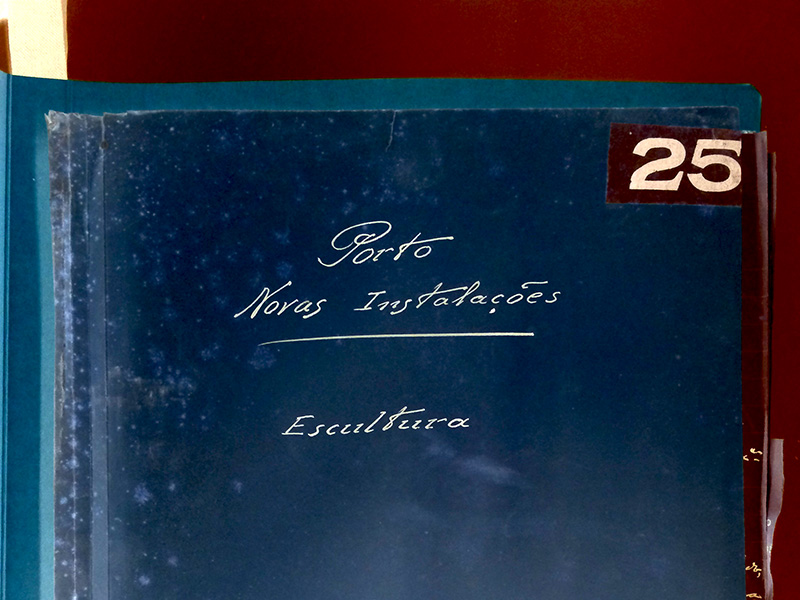Arquivo
2018
DE 7 JULHO A 23 SETEMBRO
Nova data de inauguração:
sexta-feira, 6 de julho, 22h
Entrada gratuita

João Penalva (Lisboa, 1949) é um artista cujo percurso se iniciou pelo ballet e pela dança contemporânea, tendo sido bailarino das companhias de Pina Baush e Gerhard Bohner. Posteriormente, a partir da sua fixação em Londres em 1976, estudou no Chelsea College of Arts e veio a desenvolver um percurso como artista visual, utilizando a pintura, a fotografia, a instalação e o vídeo, muitas vezes combinados com texto. De facto, a obra de João Penalva possui uma forte componente ficcional, narrativa até, e constrói mundos de relações que partem de estórias reais, recreadas ou puramente construídas.
Em 1993, João Penalva realizou a sua primeira instalação, no edifício da Alfândega do Porto, então em processo de desativação, composta por duas partes: Arquivos (que incluía um livro de artista) e Café. Um marco na história da arte contemporânea portuguesa, essa intervenção conseguia uma simbiose em relação ao local que quase a camuflava no espaço, entretanto já obsoleto e deslocado no tempo.
Foi na sequência dessa intervenção que foi lançado o repto a João Penalva de intervir agora no espaço da Culturgest Porto, no qual a memória do seu passado como instituição bancária mas também a historicidade da sua arquitetura fortemente decorada está patente. O trabalho que João Penalva desenvolveu para a Culturgest parte, portanto, desse âmbito duplamente histórico (da instituição e do seu percurso pessoal) para produzir uma intervenção específica.
João Penalva (Lisbon, 1949) began his career in ballet and contemporary dance, having danced with Pina Bausch and Gerhard Bohner companies. After settling in London in 1976, he began a career as a visual artist, using painting, photography, installation and video, frequently combined with text. His work has a powerful fictional, even narrative, component, and constructs worlds of relationships that begin with real, recreated or purely constructed stories.
In 1993, at the Porto Customs House (then in the process of being deactivated), Penalva held his first installation: Arquivos and Café. This was a very important work for his own artistic development and for Portuguese contemporary art, since it achieved a symbiosis in relation to the place that had meanwhile been rendered obsolete and displaced in time.
It was following on this intervention that João Penalva was challenged to intervene in Culturgest Porto, where the memory of its past as a banking institution and the historic nature of its heavily decorated architecture are both still clearly evident. The work that he will develop takes advantage of this doubly historical set of circumstances (both in terms of the institution and his own personal artistic career) to produce a site-specific intervention.
